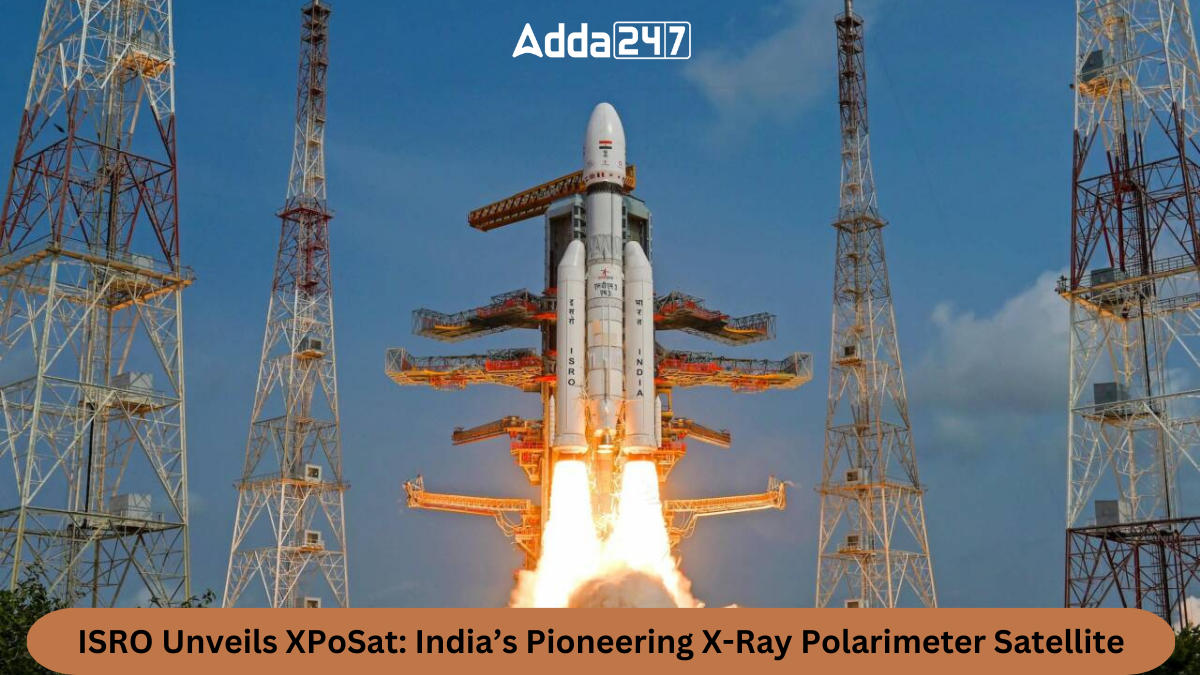
The Indian Space Research Organization (ISRO) has recently announced its ambitious plan to launch the country’s first X-Ray Polarimeter Satellite (XPoSat). This groundbreaking mission aims to delve into the polarization of intense X-Ray sources, introducing a novel dimension to X-Ray astronomy. With a focus on simultaneous studies of temporal, spectral and polarization features, XoPoSat is poised to make significant contributions to our understanding of cosmic X-Ray sources.
Mission Overview
The XPoSat spacecraft is designed for observation from Low Earth Orbit, with a non-sun synchronous orbit of approximately 650 km altitude and a low inclination of around six degrees. The mission boasts two scientific payloads, allowing for comprehensive studies of bright X-Ray sources. The spacecraft is expected to have a mission life of approximately five years, during which it will carry out observations during the eclipse period, when the spacecraft transits through Earth’s shadow.
Primary Payload – POLIX
The primary payload of XPoSat is the Polarimeter Instrument in X-Rays (POLIX), developed by the Raman Research Institute (RRI), Bengaluru, with support from various ISRO centers. POLIX is designed to measure polarimetry parameters, specifically the degree and angle of polarization, in the medium X-ray energy range of 8-30 keV photons originating from astronomical sources. This instrument is a crucial component in enabling detailed studies of X-Ray polarization, a feature not extensively explored in previous Indian space-based X-Ray astronomy missions.
Secondary Payload – XSPECT
The secondary payload, X-ray Spectroscopy and Timing (XSPECT), was developed by the U.R. Rao Satellite Centre (URSC), ISRO, XSPECT provides spectroscopic information within the energy range of 0.8-15 keV. This payload enhances the capabilities of XPoSat by enabling researchers to gather valuable data on the spectral characteristics of cosmic X-Ray sources. The combination of POLIX and XSPECT allows for a comprehensive analysis of X-Ray astronomy capabilities.
Mission Objectives
The primary objectives of the XPoSat mission include the measurement of X-Ray polarization in the energy band of 8-30 keV emanated from X-Ray sources. Additionally, the mission aims to conduct long-term spectral and temporal studies of objectives, XPoSat is poised to contribute crucial insights into the behavior and properties of X-Ray sources in the cosmos.
Launch Details
The XPoSat mission will be launched by the Polar Satellite Launch Vehicle (PSLV) from the Satish Dhawan Space Center in Sriharikota. This launch vehicle has a proven track record of reliability, making it an ideal choice for deploying scientific payloads into orbit.
Important Questions Related to Exams
Q1. What is ISRO’s recent ambitious plan in space exploration?
Sol. ISRO plans to launch India’s first X-Ray Polarimeter Satellite (XPoSat) for groundbreaking studies in X-Ray astronomy.
Q2. What is the primary focus of XPoSat’s mission?
Sol. XPoSat aims to study the polarization of intense X-Ray sources, introducing a new dimension to X-Ray astronomy with simultaneous examination of temporal, spectral and polarization features.
Q3. Where is XPoSat designed to observe from and what is its orbit altitude?
Sol. XPoSat is designed for observation from Low Earth Orbit at an altitude of approximately 650 km.



No comments:
Post a Comment